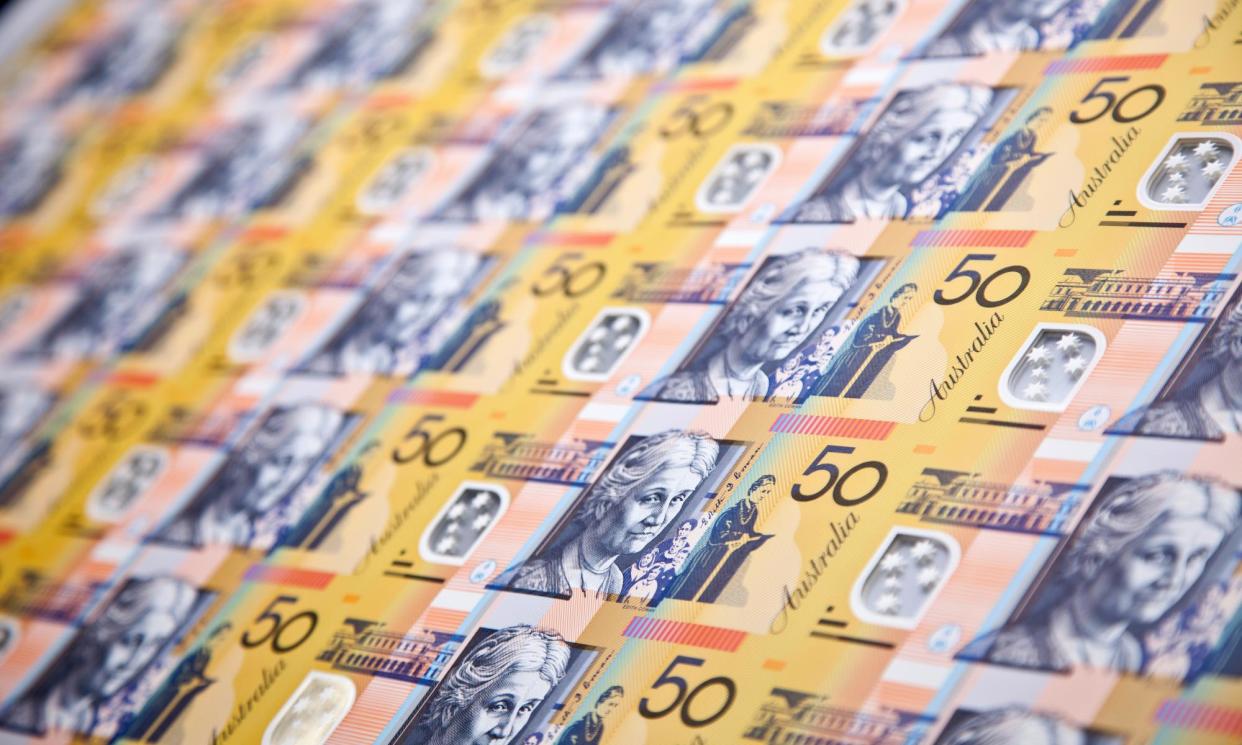RBA leaves interest rate on hold at 4.35% despite higher than expected inflation

Borrowers have been spared a 14th interest rate rise and further increases are not certain as the Reserve Bank of Australia avoids a “tightening bias” even as inflation retreated slower than previously expected.
The RBA left its cash rate on hold at 4.35% for a fourth consecutive meeting on Tuesday in a result that was widely expected. Only one economist, Capital Economics, predicted the central bank would lift the cash rate.
Governor Michele Bullock later told a press conference in Sydney that the RBA had maintained its neutral status although it did consider the case for a rate rise at this week’s meeting.
“Back in the last meeting, we thought that things were reasonably balanced,” Bullock said. “I think we still think they’re reasonably balanced with perhaps a little bit of a signal that we need to be very watchful on the upside.”
The RBA statement left its key words basically unchanged, while the bank remained “vigilant to upside risks” to inflation.
“Recent information indicates that inflation continues to moderate, but is declining more slowly than expected,” it said.
The absence of more hawkish wording sent the Australian dollar down to 66.1 US cents from about 66.3 US cents prior to the statement. It extended the falls as Bullock spoke to drop below 65.9 US cents. Stocks added to their gains, ending the day more than 1.4% higher compared with 0.8% just before the rates verdict.
Prior to last month’s release of higher than expected inflation figures for the March quarter, most economists and investors had been forecasting the RBA to cut rates from as soon as September.
That surprise, including core inflation running at an annual pace of 4%, prompted some to predict the RBA would resort to at least one more rate rise to ensure inflation returned to the bank’s 2%-3% target range by the end of 2025.
Australia was relatively slow to start hiking interest rates and they remain lower than most comparable economies even though inflation is higher. In the US, for instance, the key interest rate is 5.25%-5.5% and inflation is 3.5%; in the UK the interest rate is 5.25% and inflation is at 3.2%.
But the RBA can arguably afford to be more patient because Australians are relatively exposed to variable interest rates and are being squeezed by the fastest ramping of borrowing costs in three decades. Australia’s central bank also has a dual mandate to try to maintain full employment as well as battling inflation.
The RBA also released its quarterly statement on monetary policy, providing its updated forecasts underpinning its assessment of the economy.
The RBA lowered its GDP growth target for Australia, a move that would help nullify some near-term uptick in inflation, according to its statement on monetary policy, a report accompanying today’s rates verdict.
The central bank noted that market expectations anticipate no cut in interest rates soon – a lag seen in many similar economies.
The central bank estimates the cash rate will be 4.4% by December, up from 3.9% in its forecast three months ago. That assessment assumes the cash rate moves “broadly in line” with market expectations and would suggest that at this point the RBA does not envisage any rate cut in 2024 – and there may even be a rate increase.
It increased its near-term inflation outlook for both consumer prices but also the core – or trimmed mean – measure that strips out more volatile movements.
It now expects the headline consumer price index to tick up to 3.8% from the actual March result of 3.6%. In its February forecasts, the RBA had been tipping CPI would be down to 3.3% by mid-year.
The delay in reining in inflation extends to the end of 2024, with CPI now forecast to be 3.8% and core inflation 3.4% at that time. In February the RBA had expected the two gauges to be 3.2% and 3.1% respectively.
Significantly, the RBA still expects the two inflation measures to be back within its 2%-3% target range by the end of 2025. They should both be at 2.8% by then.
Disappointing for households will be a weakening in the pace of real wage increases, which shows how salaries are keeping up with inflation. The real wage price index ended 2023 at just 0.1%, quickening to 0.4% by June and ending this year in line with inflation.
Related: It’s bigger than the Met Gala – but nobody’s having a ball | Fiona Katauskas
Just three months ago, the index was tipped to rise to 0.8% by June – a pace now halved – and still be at 0.4% by December this year.
If growth in the economy is anaemic, government spending at state and federal levels is expected to come in higher than expected, potentially making it harder for inflation to sink.
The two key risks to the outlook are that inflation takes longer than anticipated to decline to the RBA’s target, an outcome that “history suggests” would require a higher interest rate to address.
Reassuring somewhat is the RBA’s assessment that inflation expectations “remain consistent with achieving the inflation target over time”. Bullock has stressed that the bank was paying particular heed to those expectations of what is to come remained anchored, as they still seem to be.
Higher petrol prices will continue to lift headline inflation in the near term.
“The timing of the anticipated return to [the inflation] target remains the same as previously forecast, as weaker activity is expected to dampen inflationary pressure in the second half of the forecast period,” the RBA said.
“On balance, the risks to the domestic outlook are broadly balanced”.

 Yahoo News
Yahoo News 
